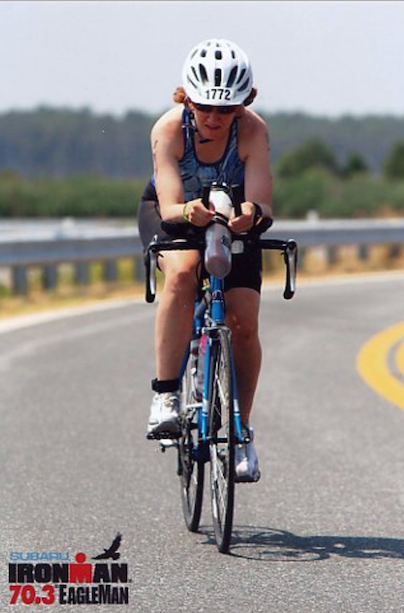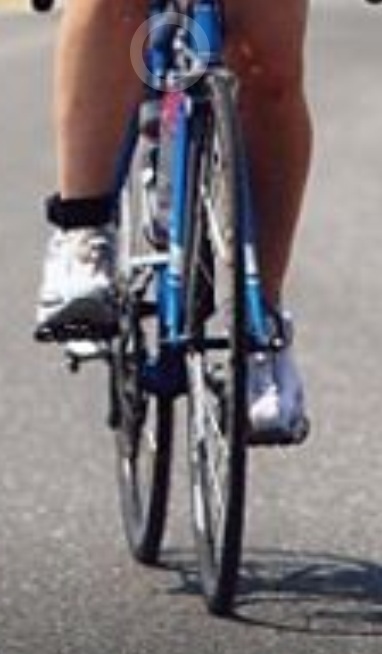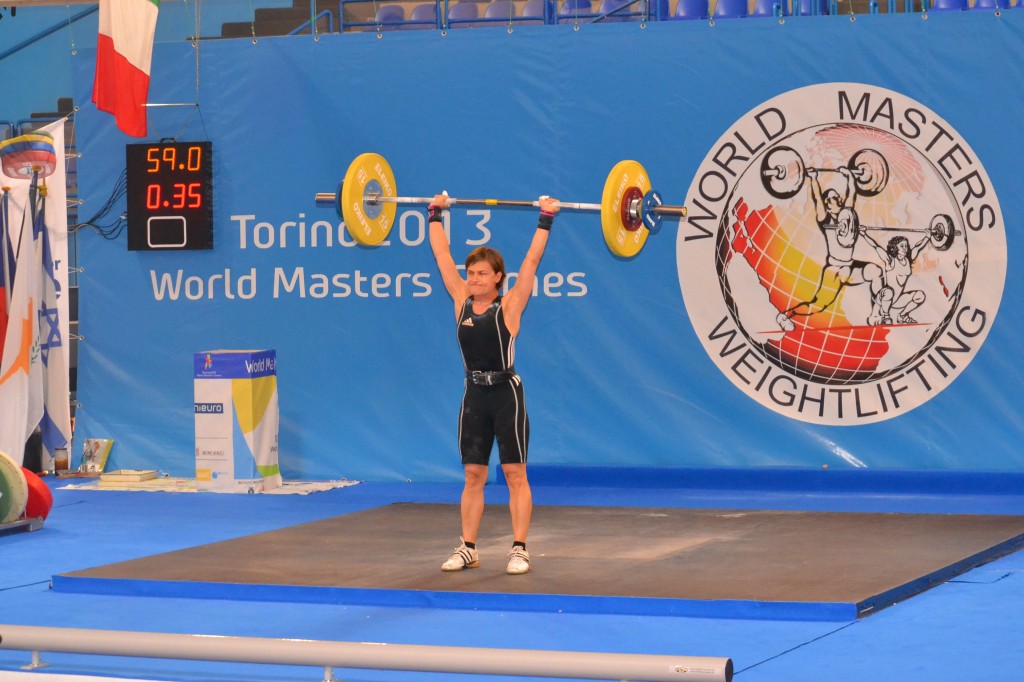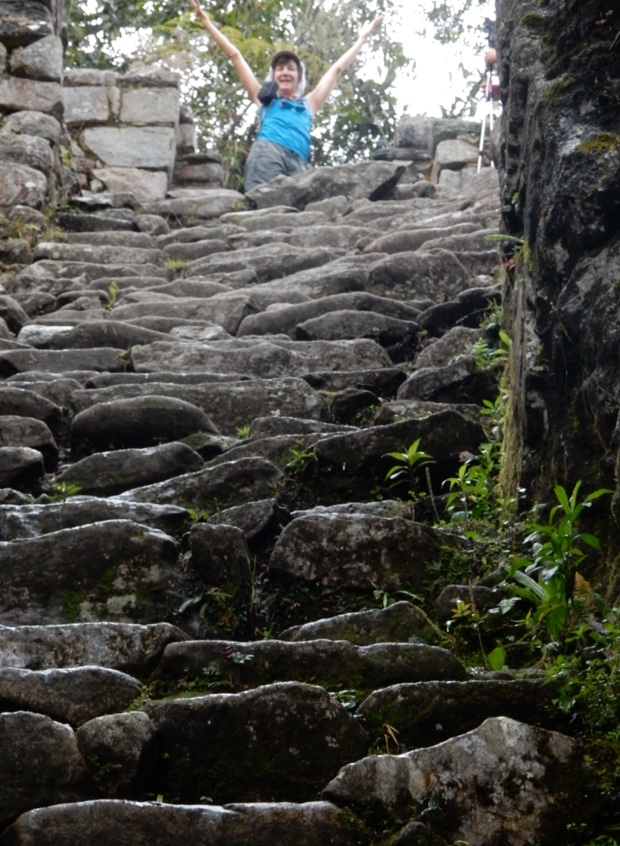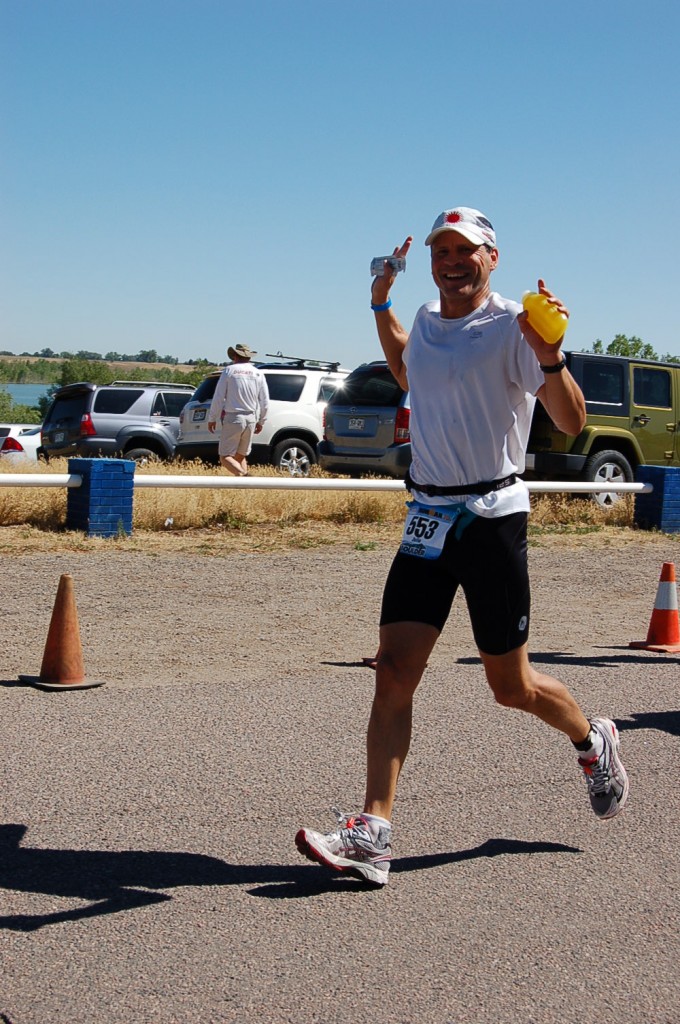By: Alison M. Hall
I promised in an earlier post that I’d write about my crazy adventure competing in an IronMan 70.3 Triathlon. My friend only agreed to run a marathon with me if I would sign up for the EagleMan IronMan 70.3 with her. A 70.3 triathlon is half the distance of a full Iron-distance race. The distances are a 1.2-mile swim, 56-mile bike, and 13.1-mile run. When she proposed this idea, I had already done several sprint-distance triathlons. I knew I could run 13.1 miles. I figured I probably could work up to biking 56 miles. But I figured neither mattered because there was no way I could swim 1.2 miles in open water. However, eventually I gave in and signed up. EagleMan is in Cambridge, MD, and takes place in early June. The training plan I used was 20 weeks, so I spent late winter and almost all of spring training. Here’s an overview of each part.
Swim Training
I took swim lessons as a kid and knew pretty much what to do, but I wasn’t technically efficient and I wasn’t fast. I never had swum more than 1K (.62 miles) and I hadn’t been a pool in almost six months. I tried to be smart with my training and I started slowly, swimming the longest 20 minutes of my life the first time out. I gradually increased the time and decreased the misery in the pool. Some swims were endurance—swimming lap after lap with little rest. I’d stop every few hundred yards for a drink, but that’s it. Some swims were designed for increasing speed, so I’d swim short distances fast, rest, then do it again. And some swims were designed for technique, doing drills using flippers, pull buoys, and paddles. I also worked with a swim coach for a few weeks to strengthen my technique, which helped a lot. By the end I could swim more than the 1.2 miles needed, and I did a 1-mile open water practice swim a few weeks before the race.
Bike Training
I teach group cycle classes, so I was at home on a bike—or at least a bike that doesn’t go anywhere and doesn’t tip over. A road bike is pretty different! I didn’t have a fancy tri bike, so my old road bike had to do. Almost all of my rides in the first half of training were inside. I set my road bike up on a trainer, and sometimes I rode to music, others to cycling DVDs, and others while watching movies. I put aerobars on my road bike so I could practice getting in the low aerodynamic position. When it finally was warm enough to go outside, I did short rides around home and the long, long, long (up to 60 miles) rides on the W&OD trail with my friend.
Run Training
I wasn’t too concerned about training for the run because I had done that much running before, although never after that much swimming and biking. The plan had a few shorter runs throughout the week with one progressively longer run on the weekend. I didn’t worry about speed at all as I got the runs in. My longest was 12 miles.
Brick Workouts
The long swim, bike, and run days usually only had one workout. But the other days had a swim in the morning and run later. Or bike in the morning and swim later. Or the hardest, bike and run back-to-back, which is referred to as a brick workout. The main point of the brick is to prepare you to run on tired legs. So the bike parts are long while the run parts aren’t. The run parts, however, are pretty rough because the legs are tired from the bike. Most weeks had one brick workout.
Race Day
I was very nervous on race day, but then the swim was easier than I expected. Fortunately we had the current with us for most of the course. I got bumped quite a bit as many, many swimmers passed me, but nothing bad, and I finished feeling tired but okay. The bike was long. I mean really, really long. I again got passed a lot, and I was alone a lot on the course. I was miserable by the end, but I finished. The run was hard. I mentioned this race was in June—it was 92 degrees with high humidity by run time. By the time I got to the snow cone machine at the halfway point (which I had been looking forward to for hours), it was empty. I got tons of ice and water at every station to keep me cool. I walked a lot more than I planned to, but I made myself run the last mile with no breaks, and I finished happy.
Finishing that race was a huge accomplishment. If you’ve done a few shorter triathlons and 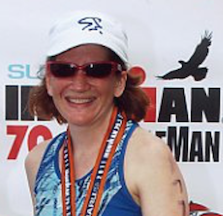 want to make the jump to longer distances, go for it. You have to be dedicated and you have to be good at planning your days, but you CAN do it. If you haven’t done a triathlon but think you might want to push yourself to this level, you still should go for it. Most experts recommend doing at least one shorter tri before a long distance one. There are many races in our area, plus Mason Rec hosts the Indoor Triathlon February 27.
want to make the jump to longer distances, go for it. You have to be dedicated and you have to be good at planning your days, but you CAN do it. If you haven’t done a triathlon but think you might want to push yourself to this level, you still should go for it. Most experts recommend doing at least one shorter tri before a long distance one. There are many races in our area, plus Mason Rec hosts the Indoor Triathlon February 27.
If you’re wondering, I did finish EagleMan again the next year, but I’ve only done sprint distances lately. I do have the dream of a full IronMan, so whenever I fulfill that even crazier dream, I’ll be sure to write about it too.

